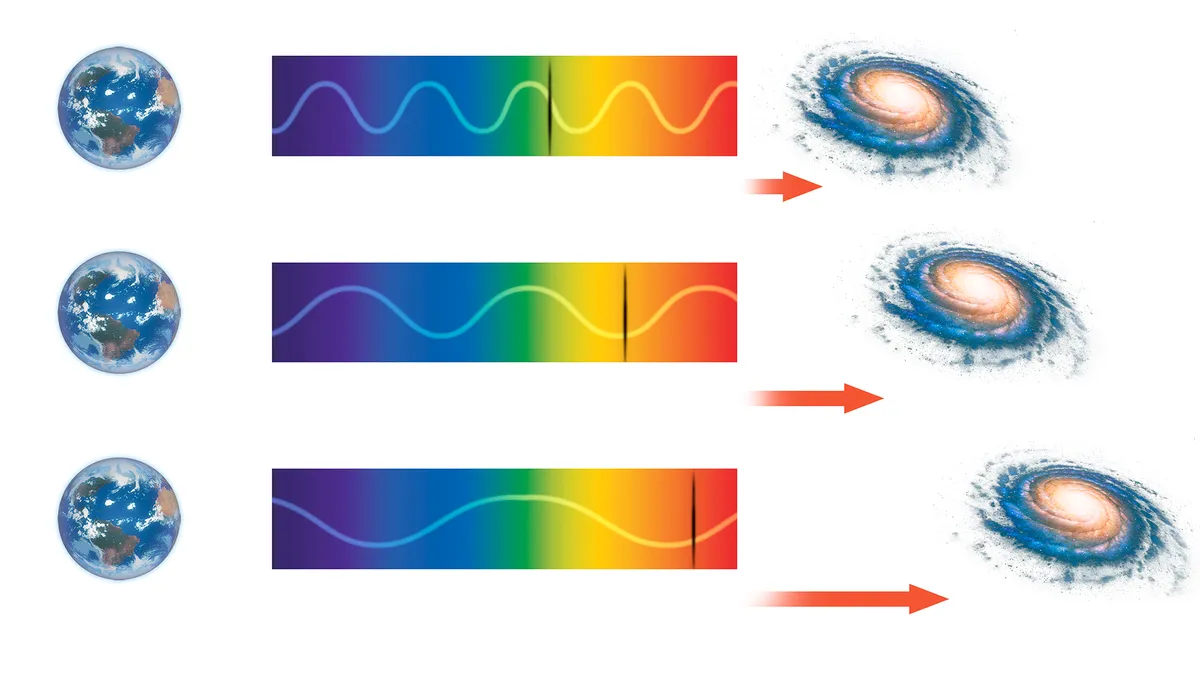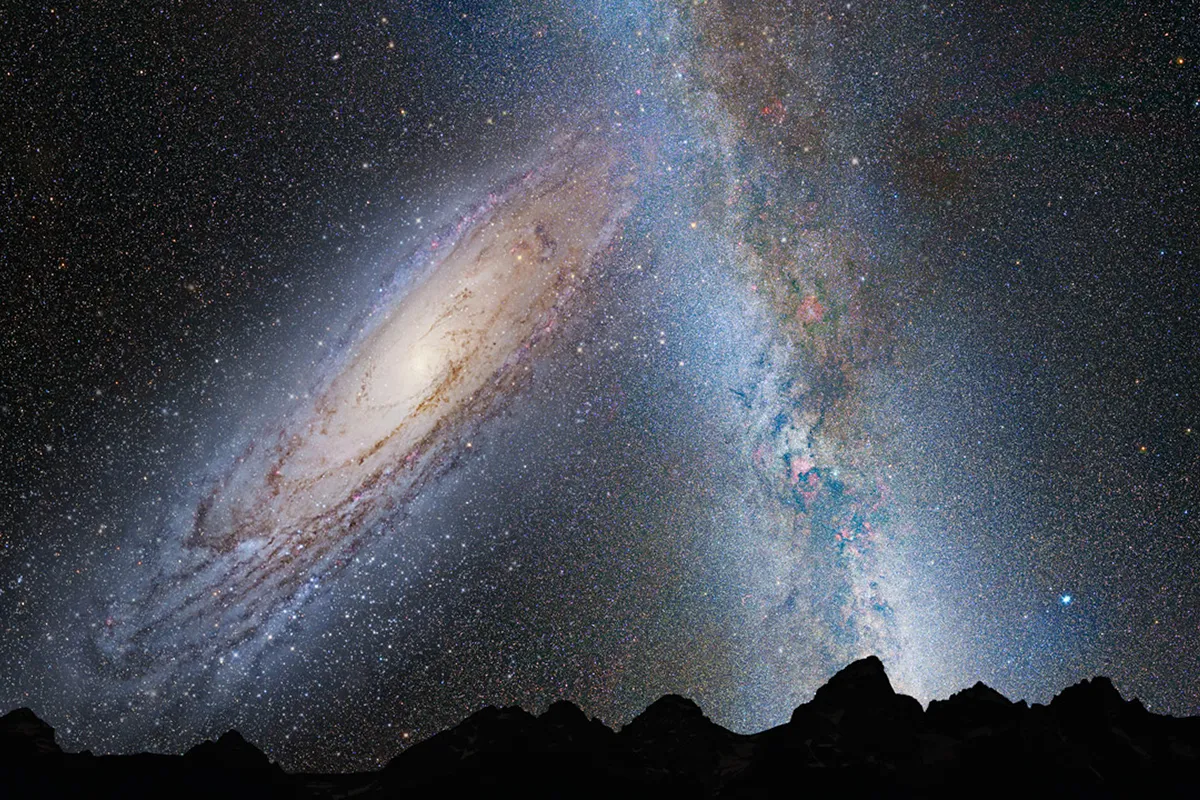All galaxies move. The motions of galaxies can be measured using the Doppler Effect, which changes the wavelength of light emitted by a galaxy due to its motion relative to us.
A galaxy moving away from us is ‘redshifted’ while a galaxy moving towards us is ‘blueshifted’.
Since all the light from a moving galaxy is shifted by the same relative amount, astronomers make use of ‘spectral lines’ in this process.
Chemical elements in the galaxy emit or absorb light at certain well-defined wavelengths and effectively act as markers within the galaxy’s light spectrum.
The shift in the spectral lines reveals the galaxy’s velocity relative to us.

Galaxies' motion and the expansion of the Universe
In general, galaxies are moving away from each other at an ever increasing rate, carried along by the expansion of the Universe.
The further away a galaxy is from us, the faster it is moving away.
This relationship between distance and ‘redshift’ is known as the Hubble-Lemaître Law.
The discovery that the Universe is expanding led to the development of the Big Bang theory of the Universe.

Does this mean galaxies will be torn apart?
Cosmic expansion is only noticeable over scales comparable to the size of galaxy clusters.
The gravitational interaction between galaxies on these scales is insufficient to prevent them from moving apart.
But on much smaller scales, the gravitational forces between galaxies can be large enough to overcome the cosmic expansion, allowing galaxies to interact, collide and sometimes merge.
For example, in our own ‘Local Group’ of galaxies, which also includes the Andromeda Galaxy and the Large and Small Magellanic Clouds, some galaxies are moving away from us (redshifted) and some toward us (blueshifted).

The Local Group of galaxies is, as a whole, moving through space at about 630 km/s.
Members of the group are also moving towards the Virgo cluster of galaxies at between 100 km/s and 400 km/s.
But our closest large galactic neighbour, the Andromeda Galaxy, is heading towards the Milky Way at around 120 km/s.
The latest research suggests Andromeda will collide almost head-on with the Milky Way in about 4 billion years! This event is known as the Andromeda-Milky Way collision.
The highest blueshift yet recorded is actually from a group of stars called a ‘globular cluster’ that resides near the galaxy M87; twenty times further away than the Andromeda Galaxy!

Galaxies move...and rotate
We've seen how astronomers can show that galaxies move, but what about their rotation?
To measure a galaxy’s rotation, astronomers look at light from opposing sides of the galaxy.
One side is approaching us while the other is receding (once the galaxy’s overall motion is accounted for) and that difference reveals the rotation speed of the galaxy.
Typical rotation speeds in the outer regions of galaxies are several hundred km/s.
In the 1970s, astronomers found that galaxies rotate in a way that cannot be driven purely by visible matter.
That is, the velocity of stars remains the same throughout a galaxy, rather than dropping off with distance from the centre, as would be expected.
This discovery led to the hypothesis that some other type of invisible matter must be acting on distant stars to give them an added push.
That invisible matter we now call ‘dark matter’.

